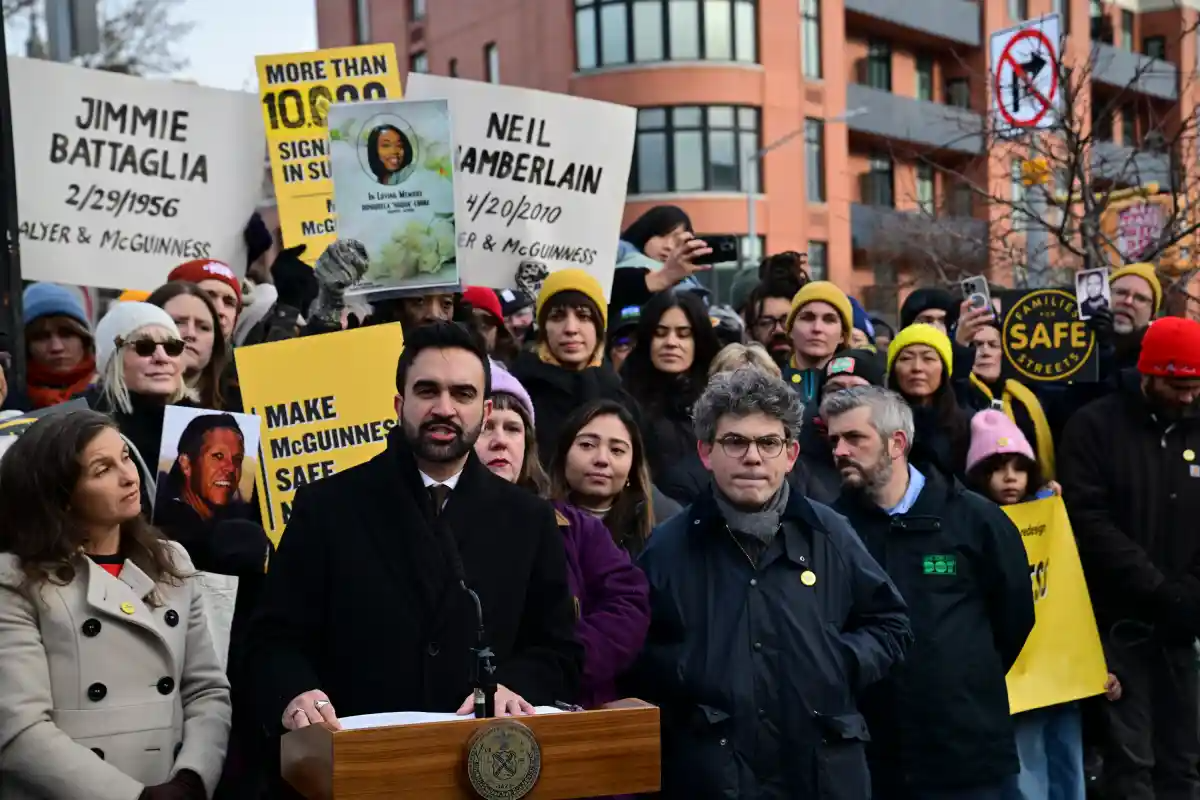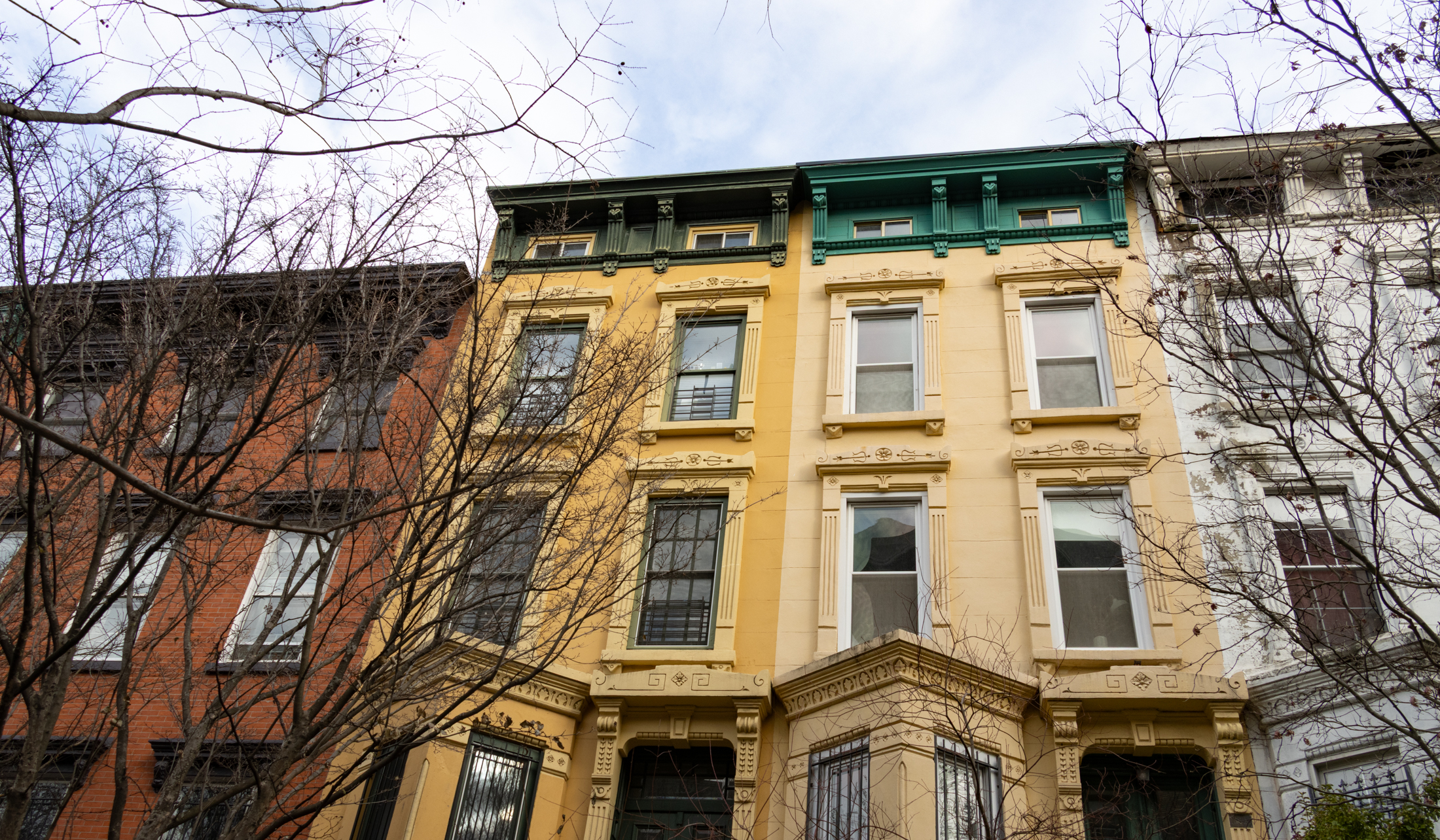Condos of the Day: 639 6th Avenue
After starting out on the wrong foot, the six-unit condo at 639 6th Avenue turned out to be a little more interesting, in our opinion, than the standard fare going up in the South Slope and Greenwood Heights these days. While the ceilings could be higher, the layout feels pretty lofty for a 976-square-foot apartment…


After starting out on the wrong foot, the six-unit condo at 639 6th Avenue turned out to be a little more interesting, in our opinion, than the standard fare going up in the South Slope and Greenwood Heights these days. While the ceilings could be higher, the layout feels pretty lofty for a 976-square-foot apartment and the kitchens are the nicest we’ve seen in a new development in a while. So far, though, buyers appear to be less enthusiastic. Although the lower duplex is in contract according to A&H, none of the five floor-throughs, priced from $569,000 to $675,000, has a taker yet. Theories?
639 6th Avenue: The Vanguard [Aguayo & Huebener] GMAP
Where Does a Tree Stand in Development Hierarchy? [Brownstoner]





Polemicist
You are wrong about the diversity of the neighborhood. Our 2 kids go to the zoned school for this area (ps 10) and it is quite diverse, about 66% latino, 18% white, 11% black and 4% asian. Students have to live in the zone to go to this school, so it’s a pretty good representation of who lives here. I got those actual #’s from greatschools.net, who got them from the DOE
http://www.greatschools.net/modperl/browse_school/ny/2054
3:55
Thank you for recounting the development history of the area, although I’m perplexed as to why you would think I’m unfamiliar with it.
In terms of my aesthetic tendencies, I believe that ultimately art should elevate humanity and represent the highest ideals of the human existence. While I admire the beautiful homes built generations ago, I realize they were possible *only because there was not a shortage of housing at the time*. In a city where so many are desperate for housing, basic human need will always take priority over art.
I believe beauty and architectural significance need not be relegated to the past, and to the few upper income folks who can buy the crumbs from a bygone era.
I imagine a city that can preserve the finest examples of its history, but create something new for future generations. Brooklyn is stuck in time – the dominant ideal today defines itself by the past, and has no vision for the future. We all seem to agree that architecture from the past speaks to the heart more than anything built today. But why, in this age of abundance, can we not have housing that both serves the needs of the people and is beautiful?
I have relentlessly put forth my argument that it is primarily restrictive zoning that allows developers to produce only the most basic housing to meet insatiable demand. The secondary reason is a bit more complicated – money lending itself is a major cause, as bankers cannot quantify the value of beauty. I’d refer you to the writings of Ezra Pound on that matter.
A thorough discussion is far outside this brief post, but suffice it to say promoting restoration to the exclusion of new housing ignores the simple fact there are a million more people in this city today than there were in 1970s. Restoration is a great thing in a city filled with abandoned buildings, but that is hardly the case today. As well, those “brownstoners” as you call them were not wealthy, and moved to Park Slope out of economic necessity as much as for aesthetic taste.
If you wish to restore one of the modest homes of Greenwood Heights, I’m all for it. But I also believe that your neighbor should be allowed to build a multi-family building.
To you Action Jackson, I would love to hear why you think I lack foresight.
Sorry, meant “$500K” not “$500.”
That would be charity in some folks’ eyes.
Polemicist, as Park Place said above, I’ll say again to your latest post:
Your comments are all class-baiting claptrap.
And any comment about affordable housing due to a FAR of 2.0 is hilarious. There were so many neighborhoods (up until the past few years or rezoning) that had FAR well over the newer R6B…in fact total abuse of R6 and R6A. So pray tell show us one example where a lower or higher FAR encouraged (or discouraged) affordable housing? Even with 421a tax abatements the development community has done nothing (or perhaps 99.9%) but high-end development.
All I have seen is way above median income (world’s above) development for the upper middle and upper class willing to sink $500 and up into “luxury” not “affordable” developments.
Once you have shown us examples, please send me the name of your dealer. I need a good fix to be able to trip the way you are thinking (or smoking, but that’s so lower-class).
“When I say the neighborhood is not diverse, it means lower income people cannot hope to live in the neighborhood, at least without some kind of charity (and rent stabilization IS charity).”
Um, so you could have just said yes I think diverse means poor – That would have been alot easier.
So, rent stabilization is charity but “affordable housing programs” are not?
3:41
Obviously I don’t think diverse means poor, but amongst rich liberal types in Brooklyn, it is catch word for poor. Hell, there are people who still think Park Slope is “diverse”.
Demographic diversity, in terms of real estate economics, refers to a neighborhood that can accommodate people from a variety of income strata. While Greenwood Heights certainly has more than a few people of lower- and middle-income means, they only live there because they purchased homes in the past that were inexpensive, or they live in housing that is made affordable via government decree or cash subsidy.
The low 2.0 FAR pretty much means no affordable housing programs will be possible in GH in the future. What that means is that in the current climate of anti-developer madness, the poor have no chance of competing with higher income people for any new housing brought online in the neighborhood.
When I say the neighborhood is not diverse, it means lower income people cannot hope to live in the neighborhood, at least without some kind of charity (and rent stabilization IS charity). That isn’t promoting diversity. It does the exact opposite.
So out of place. Destroying the character of a neighborhood.
Alas, even when these Greenwood houses were in decent shape they had many a hater–
When my grandfather married my grandmother in the 20s, she insisted that they not live anywher near the ‘shantytown’ that he grew up in. She always like to say that it looked like ‘Dodge City’ I think they call it ‘South Brooklyn by the Cemetary’ Park Slope was just ‘South Brooklyn near Downtown’ So they moved to a respectable brick house in a new development – Midwood.
Goodnight everyone- have a happy valentine’s day